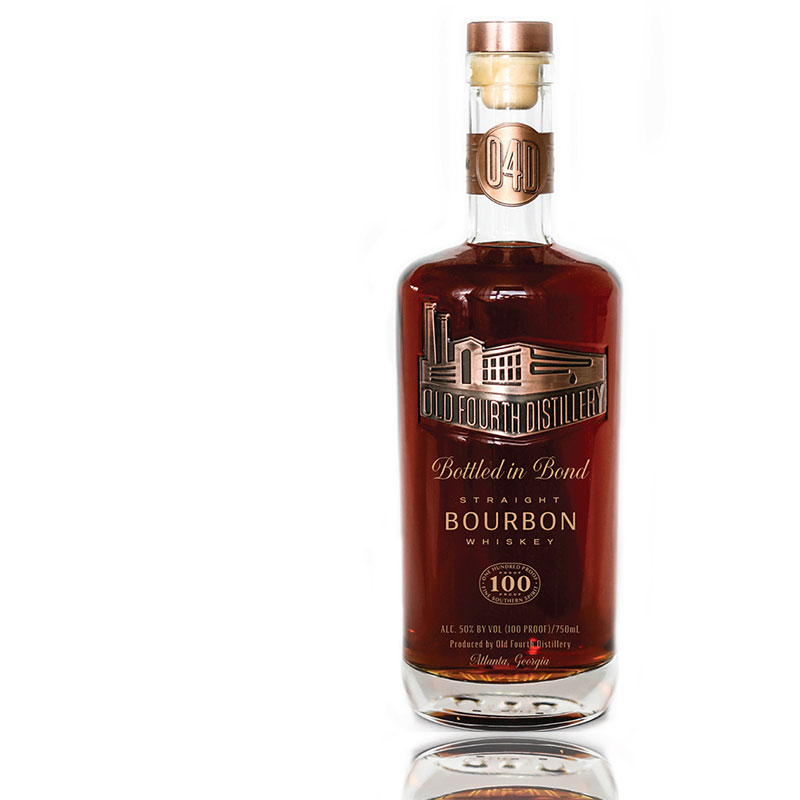Blanton’s Bourbon is a true single barrel whiskey made right here in Bourbon country! You know Blanton’s if you have seen it – it comes in one of the most beautiful liquor bottles on store shelves, and it has the distinguished horse on top. In actuality, Blanton’s comes with 8 different stoppers, each one featuring a rider in a different pose and a letter by his horses rear right leg. Each pose represents the rider in different positions during a race – from sitting upright at the start to his arm up in victory after crossing the finish line. Collect the whole set and B-L-A-N-T-O-N-S is spelled out. It takes a serious bourbon lover to collect enough to fill up one of those Blanton’s bourbon stopper display’s – but it can be done.
Ask me how I know!
Like most Kentucky bourbon, Blanton’s pays homage to its heritage by sporting the name of a bourbon patriarch – namely Colonel Albert Blanton. Blanton started out at Buffalo Trace back when it was the O.F.C. Distillery in 1897. He was there when George T. Stagg took over the operation in 1912, and worked his way through every position until he became President of the plant in 1921. It was Albert Blanton that hired on Elmer T. Lee, the man who would become the first Master Distiller of Buffalo Trace, and the man who would create the first single barrel bourbon, named after his old boss.
You might remember from our article on single barrel bourbon that a single barrel bourbon comes from one barrel that is hand picked by the Master Distiller. The Master finds barrels that are located in the sweet spot of a rick house, samples the barrel over time, and when it hits its peak, the Distiller and his hands bottle that barrel instead of blending it with other barrels. This might mean that some single barrels vary from bottle to bottle, rather than having the consistency of small batch bourbons.
Not always the case in our day and age of quality assurance, but sometimes things get interesting.
In the case of Blantons’ bourbon, Col. Blanton believed that the “center-cut” middle section of Warehouse H was the best location for aging his barrels. According to the Blanton, he would personally taste and pick barrels for friends and family members that met his standards. Elmer T. Lee would carry on this tradition after Col. Blanton died in 1959.
BLANTON’S SINGLE BARREL BOURBON TASTING NOTES
The first thing you should know about Blanton’s is that it comes from Buffalo Trace’s mash bill #4. That’s 75% corn, 15% rye, and 10% barley. The mash bill is one of the keys to bourbon flavor – but not the only factor. There is also the yeast strain that gives Blanton’s bourbon its nice fruity nose. I get apple, pear, and honeydew, along with strong vanilla and baking spices. Blanton’s smells so good, you could probably create a line of candles with it!
After 9 years in a barrel, the whiskey picks up some nice weight. The first sip has a medium heavy body that sticks to the tongue in a great way! Unlike younger bourbons, this is probably one of the smoothest bourbons you will ever have! That doesn’t mean this is a baby’s bourbon – at 93 proof, there is still plenty of heat to make you pay attention, but Blanton’s carries it well.
The taste shows the high rye mashbill – there is tons of spice and a deep, rich wood that remind me of fall (my favorite time of year)! I was pleasantly surprised by the fruit flavors in the glass as well. True to the nose, there is tons of orange and cherry in the middle of the taste.
Every true bourbon lover looks forward to the finish as much as the first sip, and Blanton’s has a dram good finish (see what I did there?)! Dry, bright, sweet, long lasting – this is a real sipper that you can sit back and enjoy from beginning to end!
OUR VERDICT
A
From the fantastic nose to the interesting taste and the long-lasting finish, I give Blanton’s bourbon a solid A.
If you don’t like Blanton’s, you don’t like bourbon. I dare you to take a sip of this Kentucky brown water and not smile! Some of you might be turned off by the high price tag (Blanton’s bourbon price is around $50), but you get what you pay for! This is one of the top 10 bourbons on my list. Try it at the bar first, then head to a liquor store near you and grab yourself a bottle! If its good enough for the President, its good enough for you!
If you enjoyed this bourbon review, keep the conversation going! Tell us what you think by leaving a comment and a star rating below!
The post BLANTON’S SINGLE BARREL BOURBON REVIEW appeared first on Bourbon Of The Day.














